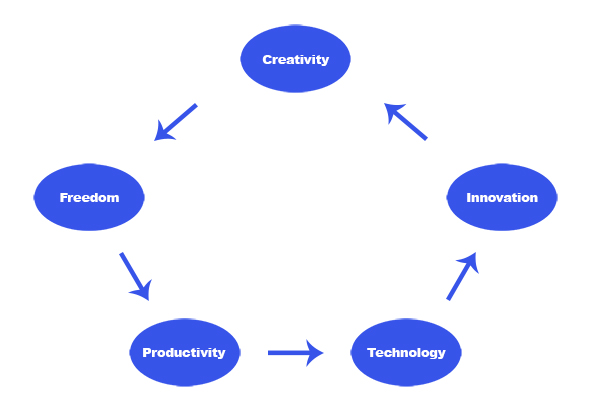The human being is qualified as « homo sapiens », the man who knows and « homo faber », the man who makes. « Homo ludens » is the man at play.
So i decided to find out more about Constant Nieuwenhuy’s « homo ludens » and the context.
We are in the period after the second world war, everything is destroyed and has to be rebuilt. Constant had an utopian vision of how we could re invent our world, and for him it was a real possibility. We had to forget how we did thing in the past (traditions, routines, processes, plans…) and create a new world from dust, that he called « New Babylon ».
The people of the « New Babylon » world are called the « homo ludens ». He insisted on the importance of play. Something joyful, pleasant and adventurous in our daily lives. People could transform, recreate our environment according to their new needs. Everyone could use his creativity as he wished. Art would exist as part of our day-to-day existence, everyone would be an artist. He puts the human in the centre of everything. Mobility is another key dimension because it was getting easier to travel across the world. Constant saw the new babylonians as a new race of nomads with unlimited freedom to decide about the appearance of their surroundings.
I think this staircase is the perfect representation of Constant’s idea of « homo ludens ». The stair’s principal function is no more the useful part of it, to go up and down. The amusement of going up and down is what it is about. It isn’t the most practical staircase but when you go up or down, you have fun.
The opposite of this new concept of a « ludic society » is the society we are in now, a « utilitarian society ». A society based on the exploitation of the human being’s capacity for work in any kind of domain. « Utility » is the principal criteria of a man for his activity. The creative man can only claim his right on rare occasions.
The « ludic society » on the contrary is freed from repetitive production work. It would be a « classless society » with no more hierarchy. A society were individuals developed and discovered their own creativity with others. Constantly at play, an uninterrupted process of creation and re creation.
How would « social justice » work in this new world ?
Equality and freedom between everyone is the principle of social justice. Freedom depends not only on the social structure but also on productivity. Supposing we are in a world where people create daily, if there is no production then this society doesn’t work. Productivity depends on technology. The new technologies we discover every year give us new ways of doing things, more possibilities, more freedom for the « homo ludens » to play with.
With theses new possibilities people innovate, make something new, re do, renew, rebuild, restore, transform, change… This is in effect the role of a designer but in this world there wouldn’t be any constraints.
These innovations can be used in all kinds of activities. For instance, Constant imagined that air conditioning in « New Babylon » does not only serve to recreate, as in a « utilitarian society » an « ideal » climate but also to make it possible to vary the ambiance to the greatest possible degree.
Technology and innovation enable creativity. For example, we can now bring to reality what was a simple 2D image on a computer. There are many kinds of innovations but I think that artificial intelligence (see also : 7 trends for artificial intelligence in 2016 ) is going to be the major innovation that will have an impact on our society and really affect our creativity in the future.
Imagine a world where « homo ludens » would be able to have artificial intelligence (AI) assistants. You could not really make the difference with a human. They would have all the data of the world in their system and would use « deep learning » .
« Deep learning » is different learning methods where the AI has advanced audio and visual analysis skills (facial recognition, voice recognition, computer vision…). They would be able to modify their attitude based on the past, they learn. If you are a bit curious about this subject I advise you to watch the tv series « Westworld ».
With all this data and advanced technology IA assistants could give to « homo ludens » a different perspective about their production and bring real technical and practical support instantly. It would be similar to the character « Jarvis » in Iron Man. What is interesting about this AI is that it is invisible.
Artificial intelligence and « homo ludens » could work well together but AI can be dangerous if it is not well controlled.



